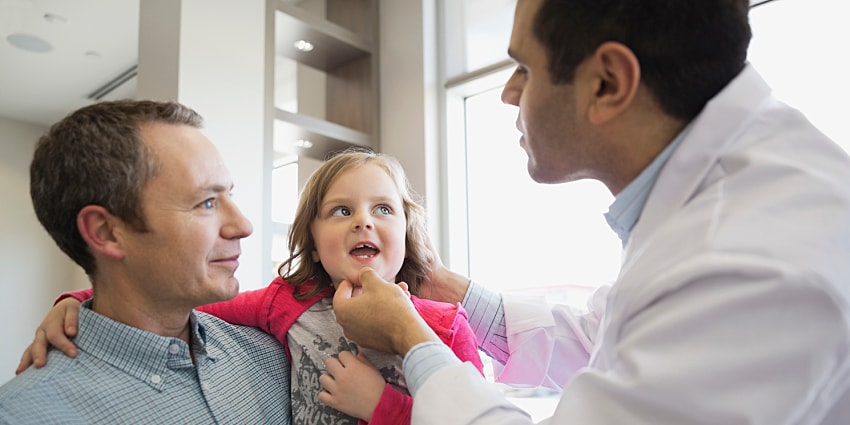As you know, a child should have the first dentist visit by his or her first birthday. Dental appointments at a young age allow you to assist children’s parents in developing a healthy diet and identifying areas of their children’s mouths that are at risk for dental decay. Slightly over half of first dental treatments in kids under three and a half years of age take place in the emergency room, and about half of these visits are in fact related to dental caries.
The Journal of Pediatrics found that children who have their first dental visit by the age of one are less likely to need restorative care or emergency visits than children who have their first dental visit later. As oral health providers it is our role to provide the right oral hygiene education to parents, allowing them to make healthy choices that define their kids’ habits as they grow up. In order for them to trust you, however, it is essential to create a positive environment for both patient and parents – especially during the nerve-wracking first dentist visit. Here’s how:
Show-Tell-Do
Allow the patient to see the mirror, and if they’re old enough to hold it by themselves, let them. This keeps them feeling in control. For patients under age one, allowing them to hold their new toothbrush can let them focus on something positive as well. You might also count each fingernail with the explorer so the child can see for himself/herself that it’s not harmful. And when kids touch the soft prophy cup before attaching it to the handpiece, you’re teaching them it is indeed soft and gentle. Remember, we need to reinforce that we’re not going to hurt the patient, and we often need to do it multiple times.

Keep It Simple
Similar to adult patients, kids sometimes don’t need all the details. Being flexible in this way is essential to ensure you’re meeting the needs of your patients without panicking them. To this effect, provide a handout for parents with specific instructions on proper brushing and diet. It can be a wonderful resource for them to refer back to in between their appointments.
Keep Your Cool
As a new graduate, I had the pleasure of working with two amazing pediatric dentists. They had an amazing ability to connect with every single patient, and more often than not would sing to each child when preforming fillings. Children have a remarkable ability to feel our stress, and will mimic these feelings when they assume they’re in trouble. Therefore, always be excited and happy to provide a first-timer with a positive experience – even if you’re in the middle of something slightly more complicated.
Have the Patient Arrive Early
When scheduling a child’s first appointment, advise the parent to bring them in 10 to 15 minutes earlier than the appointment itself, but without telling them. This allows parents to feel less stressed when they get stuck in traffic or forget to bring their paperwork. In addition, the child will have time to become more comfortable in the waiting room. Mom and Dad are often more anxious than their child, and this additional time allows them to relax before the appointment starts.
Educate Parents before and After
Before the appointment, meet the family in the waiting room to ask the parents questions while their child continues to play. This allows you to familiarize them with proper home care and any risks the child may be facing. Mom and Dad can then express any concerns while the child continues to play, making chair time less stressful. Don’t forget that you may want to provide specific oral hygiene instructions after the exam while escorting them to the front desk to make their recall appointment.
Manage Your Expectations
The main objective for the first dentist visit is to build trust with the patient. When we build trust, they’re willing to come back. Have fun, and don’t force the child into tears just to get some extra stain off. Remember that patients mimic behavior, so the happier your are, the more comfortable they’ll be. The first dentist visit allows clinicians to empower parents to foster good oral care for their children, both in the kitchen and over the sink. It’s an opportunity to determine if fluoride varnish is needed, instill proper oral care and identify any potential oral health issues before they become an emergency.
Takeaway Box
- Remember the first dentist visit is to build trust.
- Engage the patient by allowing them to hold their own toothbrush to give them a sense of familiarity and comfort.
- Stay calm and smile; children mimic our body language.
Why It’s Valuable
We have the opportunity to create trust and a fun environment for children. When we build positive connections with patients we increase trust which leads to compliance with home care recommendations. Providing a knowledgeable, hands-on and non abrasive approach to treating children is essential for a foundational first dentist visit.





You must be logged in to post a comment.